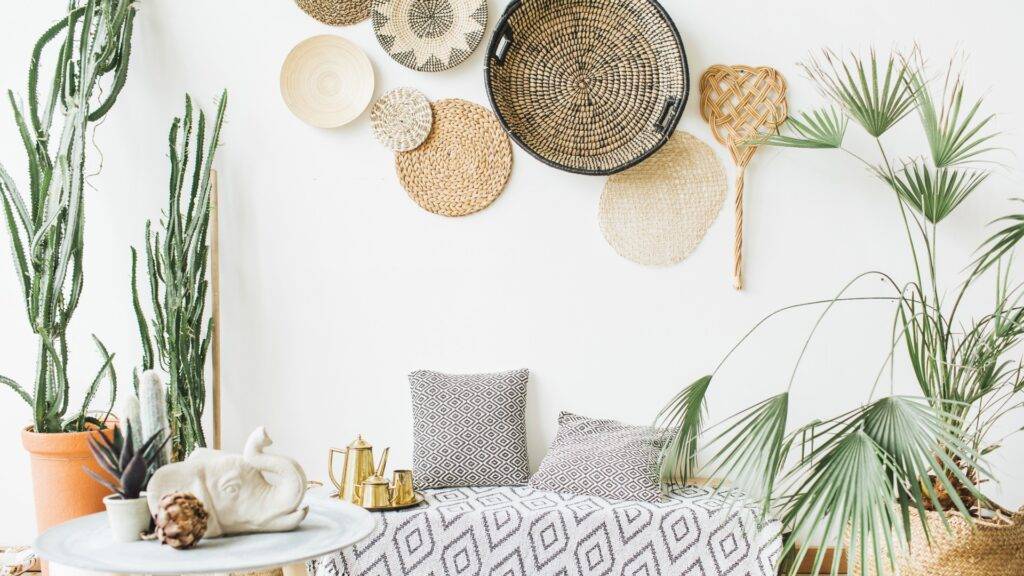Introduction
Boho, short for Bohemian, is a design style that’s as free-spirited as it is eclectic. If you’ve ever walked into a room that feels relaxed, layered, and effortlessly stylish, chances are, you’ve encountered Boho decor. It’s the perfect combination of comfort, individuality, and warmth—and it’s as much a lifestyle as it is a design aesthetic. Whether you’re decorating a cozy apartment or transforming a backyard patio, Boho style invites creativity and embraces imperfection. Let’s explore the key elements that make Boho unique, and take a quick dive into its fascinating history.
The Boho Aesthetic: Key Elements That Define the Style
Boho style is all about creating a space that feels lived in, personal, and inviting. It’s about mixing textures, colors, and materials in a way that’s effortlessly beautiful, and making sure it feels like you. Here are the core elements that define Bohemian interiors:
1. Color Palette: Earthy Tones and Vibrant Accents

Boho style loves color, but it does so in an organic and natural way. The base of the palette tends to be warm and earthy—think browns, creams, whites, and deep greens. From there, pops of vibrant colors like mustard yellows, terracotta oranges, dusty pinks, and teal blues are used to inject personality and energy into the space.
Tip: Don’t be afraid to mix and match bold shades. The beauty of Boho is that there’s no one “right” color combination, and the goal is to create harmony through contrast.
2. Natural Materials and Textures
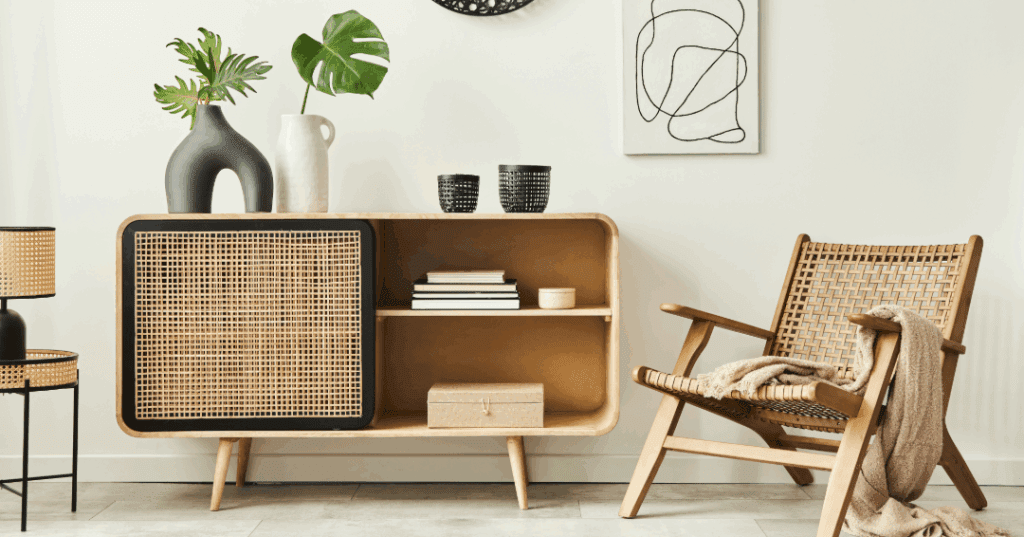
One of the hallmarks of Boho style is the use of natural materials. Wood, rattan, wicker, and bamboo play a big role, often seen in furniture and accent pieces. Rugs, throws, and pillows made of wool, jute, or cotton also help bring warmth and texture to a room. These materials keep the space grounded, adding an earthy, organic vibe.
Tip: Incorporating a variety of textures—think woven baskets, fringe throws, and plush velvet cushions—gives your Boho space a layered, lived-in feel.
3. Mixed Patterns and Prints
Boho design thrives on mixing patterns and prints without worrying about matching. From floral and geometric to ethnic and tribal prints, the idea is to create a sense of adventure and freedom. This is where you can really have fun by mixing different textiles, like an Ikat-patterned pillow with a Moroccan rug, or a vintage tapestry hanging on the wall.
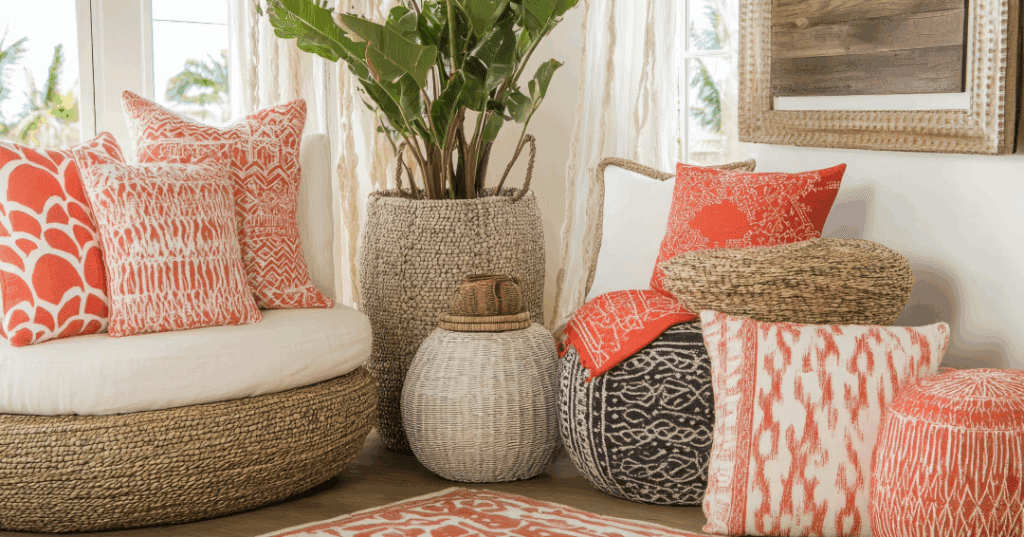
Tip: While mixing patterns is essential, try to balance large, bold prints with smaller, subtler ones to keep the room from feeling too chaotic.
4. Vintage and Handmade Pieces
Boho is all about creating a personal connection to the space, which is why vintage and handmade pieces are often featured. Whether it’s an antique brass lamp, a handwoven blanket, or a flea market find, these elements give the room character and history.
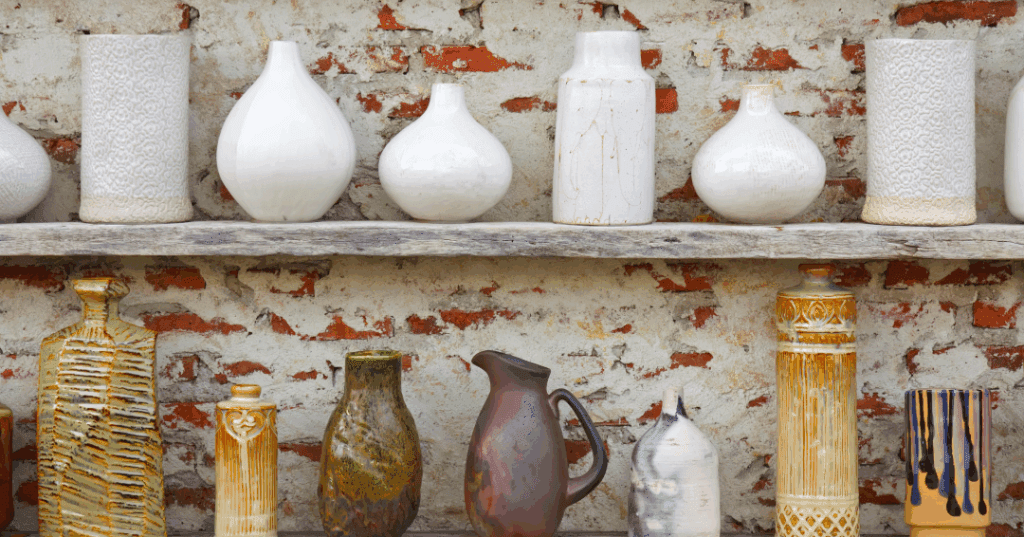
Tip: Thrifted finds, family heirlooms, or art collected on travels are all great ways to infuse your space with unique personality.
5. Plants, Plants, and More Plants
A key feature of Boho interiors is an abundance of plants. From hanging planters to large leafy houseplants, greenery brings life into the room. It also reinforces the natural aesthetic, creating a peaceful, zen-like atmosphere that complements the free-spirited nature of the style.
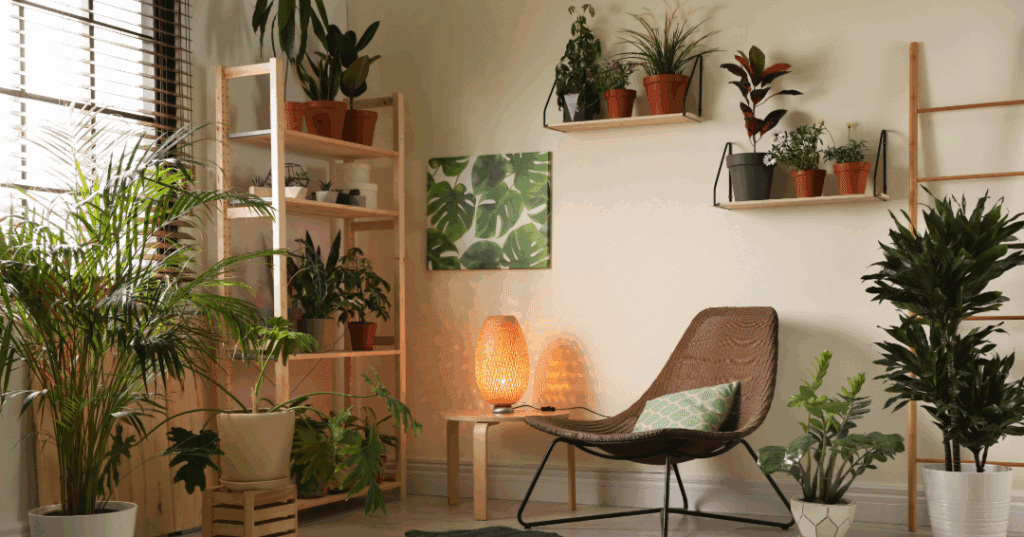
Tip: If you’re new to plants, start with low-maintenance varieties like snake plants or pothos. Over time, you can add more variety and experiment with different plant types.
6. Relaxed, Cozy Atmosphere
Boho spaces are designed for lounging, reflecting, and spending time with friends and family. Low-slung seating, large cushioned pillows, and relaxed furniture arrangements make the room feel welcoming and inviting. The key is to create a space that feels comfortable and easy-going.
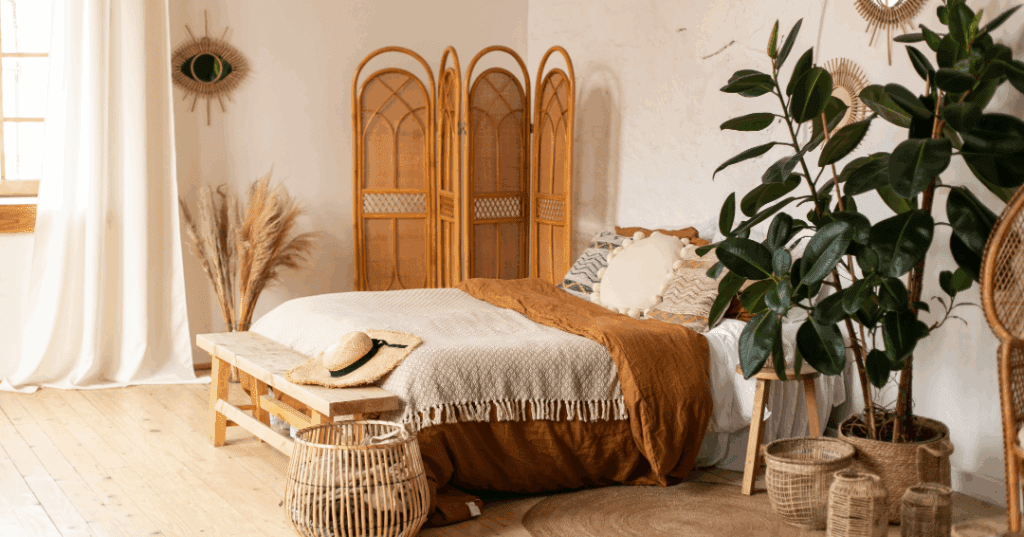
Tip: Think oversized cushions, poufs, and floor seating that make it easy to curl up with a good book or entertain guests.
The History of Boho Style: A Journey Through Time
Bohemian style has roots that go far deeper than the cozy spaces we know today. The term “Bohemian” itself originally referred to artists, writers, and intellectuals in 19th-century Europe who rejected the conventions of bourgeois society in favor of free-spirited lifestyles. They lived modestly, often choosing to live in unconventional ways, and their homes reflected their non-traditional values.
The term “Bohemian” came from the French, who originally used it to describe a group of Romani (Gypsy) people who had migrated through the region from Bohemia (now part of the Czech Republic). This association with the Romani people, known for their nomadic lifestyle, further solidified the idea of Boho style as being unconventional, eclectic, and a bit rebellious.
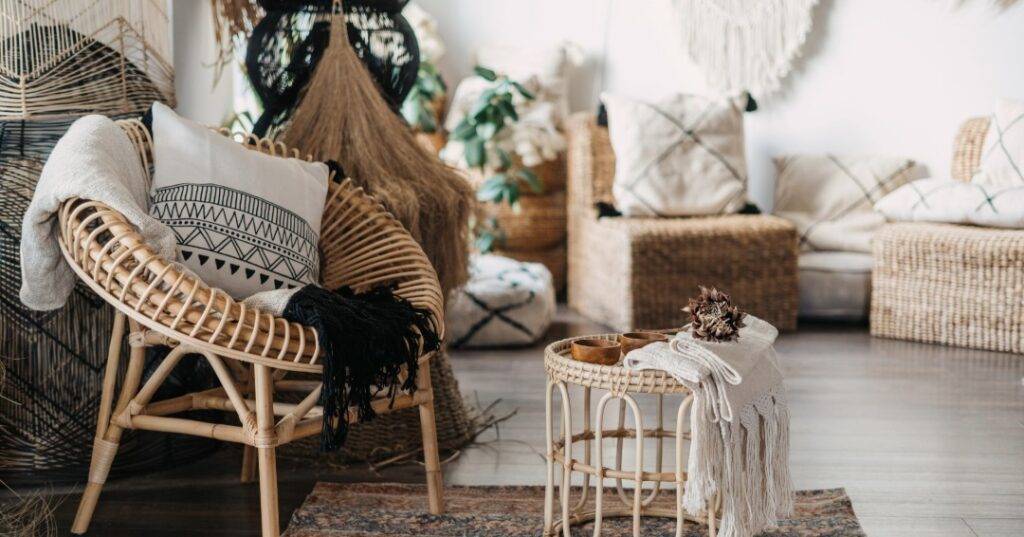
The true rise of Boho interior design came in the 1960s and 1970s, during the counterculture movement. With the popularity of flower power, peace signs, and a rejection of materialism, young people embraced an aesthetic that reflected their ideals of freedom and creativity. They favored thrift store finds, hand-me-downs, and things with a personal touch—ideas that are still at the heart of Boho design today.
Boho style then evolved through the years, fusing elements from various cultures, especially Moroccan, Indian, and Eastern influences, creating a design aesthetic that felt global and timeless. Its relaxed vibe made it popular among artists and creative minds, and its emphasis on individuality and personal expression made it an enduring favorite in homes around the world.
How to Bring Boho Into Your Home
Well, you can always click here to shop at the DAPO at Home Boho selection to get a complete solution.
Now that you’re familiar with the elements of Boho style and its history, how do you incorporate it into your own space? Start by adding a few key Boho elements—maybe a woven throw, a couple of textured pillows, or a houseplant or two. Mix your favorite vintage finds with natural materials and consider using warm, earthy tones with pops of color. Remember, Boho style isn’t about perfection; it’s about creating a space that feels personal, relaxed, and full of energy.

Tip: Don’t feel pressured to go all-in on Boho from the start. Start with a few small pieces and let your room evolve over time. After all, the essence of Boho is all about personal expression!
Conclusion:
Boho style offers the perfect blend of comfort, creativity, and individuality. It’s a design that allows you to break free from traditional rules, embrace imperfection, and create a space that feels like home. Whether you’re drawn to the earthy textures, vibrant patterns, or eclectic mix of vintage finds, Boho has a little something for everyone. So, go ahead—let your space be a reflection of your free-spirited soul, and embrace the beauty of Bohemian design.

